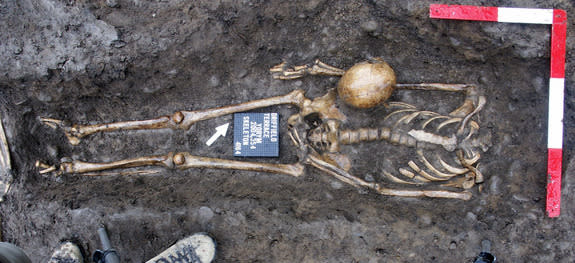These decapitated remains found in York belonged to a male who may have been a Retiarii gladiator, who fought with a net and spear or trident.
DNA from seven decapitated skeletons thought to be gladiators is helping researchers unravel the gruesome origins of the ancient remains. The new findings suggest that the Roman Empire's genetic impact on Britain may not have been as large as researchers had thought.
The headless skeletons were excavated between 2004 and 2005 from a Roman burial site in Driffield Terrace in York, England, the archaeologists said. Around the time the bodies were buried, between the second and fourth centuries A.D., the area that's now York was the Roman Empire's capital of northern Britain, called Eboracum. The cemetery where the bodies were discovered was located in a prominent area, near a main road that led out of the city, according to the researchers.
Most of the skeletons found at this site were of males younger than 45 who were taller than average and showed evidence of trauma, such as cuts to their arms and fingers, the archaeologists said. Famously, the majority of them had been decapitated. These standout traits led some experts to suggest that this was a burial site for gladiators. However, it is also possible that these men were in the military, which, in Roman times, had a minimum height requirement, the researchers said. [See Photos of the Decapitated Gladiator Skeletons]
Read the rest of this article...

No comments:
Post a Comment
Note: Only a member of this blog may post a comment.